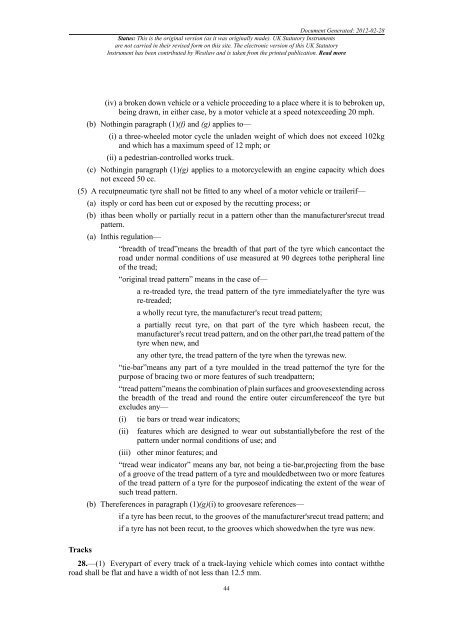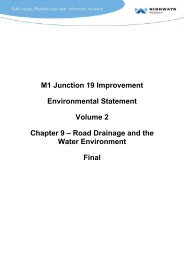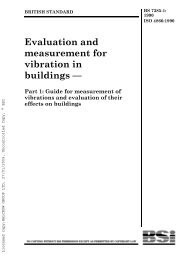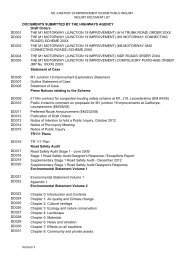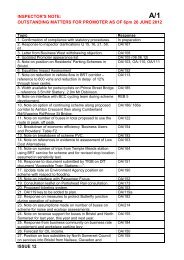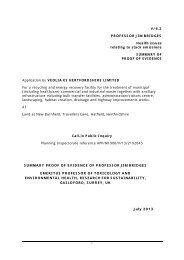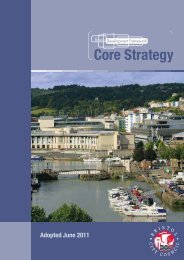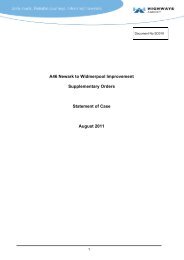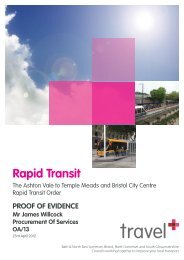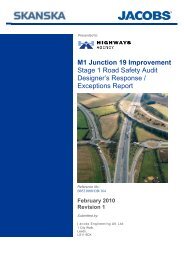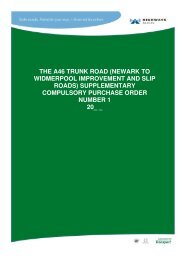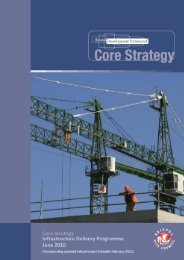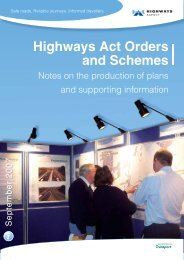The Road Vehicles (Construction and Use) Regulations 1986
The Road Vehicles (Construction and Use) Regulations 1986
The Road Vehicles (Construction and Use) Regulations 1986
Create successful ePaper yourself
Turn your PDF publications into a flip-book with our unique Google optimized e-Paper software.
Document Generated: 2012-02-28<br />
Status: This is the original version (as it was originally made). UK Statutory Instruments<br />
are not carried in their revised form on this site. <strong>The</strong> electronic version of this UK Statutory<br />
Instrument has been contributed by Westlaw <strong>and</strong> is taken from the printed publication. Read more<br />
(iv) a broken down vehicle or a vehicle proceeding to a place where it is to bebroken up,<br />
being drawn, in either case, by a motor vehicle at a speed notexceeding 20 mph.<br />
(b) Nothingin paragraph (1)(f) <strong>and</strong> (g) applies to—<br />
(i) a three-wheeled motor cycle the unladen weight of which does not exceed 102kg<br />
<strong>and</strong> which has a maximum speed of 12 mph; or<br />
(ii) a pedestrian-controlled works truck.<br />
(c) Nothingin paragraph (1)(g) applies to a motorcyclewith an engine capacity which does<br />
not exceed 50 cc.<br />
(5) A recutpneumatic tyre shall not be fitted to any wheel of a motor vehicle or trailerif—<br />
Tracks<br />
(a) itsply or cord has been cut or exposed by the recutting process; or<br />
(b) ithas been wholly or partially recut in a pattern other than the manufacturer'srecut tread<br />
pattern.<br />
(a) Inthis regulation—<br />
“breadth of tread”means the breadth of that part of the tyre which cancontact the<br />
road under normal conditions of use measured at 90 degrees tothe peripheral line<br />
of the tread;<br />
“original tread pattern” means in the case of—<br />
a re-treaded tyre, the tread pattern of the tyre immediatelyafter the tyre was<br />
re-treaded;<br />
a wholly recut tyre, the manufacturer's recut tread pattern;<br />
a partially recut tyre, on that part of the tyre which hasbeen recut, the<br />
manufacturer's recut tread pattern, <strong>and</strong> on the other part,the tread pattern of the<br />
tyre when new, <strong>and</strong><br />
any other tyre, the tread pattern of the tyre when the tyrewas new.<br />
“tie-bar”means any part of a tyre moulded in the tread patternof the tyre for the<br />
purpose of bracing two or more features of such treadpattern;<br />
“tread pattern”means the combination of plain surfaces <strong>and</strong> groovesextending across<br />
the breadth of the tread <strong>and</strong> round the entire outer circumferenceof the tyre but<br />
excludes any—<br />
(i)<br />
(ii)<br />
(iii)<br />
tie bars or tread wear indicators;<br />
features which are designed to wear out substantiallybefore the rest of the<br />
pattern under normal conditions of use; <strong>and</strong><br />
other minor features; <strong>and</strong><br />
“tread wear indicator” means any bar, not being a tie-bar,projecting from the base<br />
of a groove of the tread pattern of a tyre <strong>and</strong> mouldedbetween two or more features<br />
of the tread pattern of a tyre for the purposeof indicating the extent of the wear of<br />
such tread pattern.<br />
(b) <strong>The</strong>references in paragraph (1)(g)(i) to groovesare references—<br />
if a tyre has been recut, to the grooves of the manufacturer'srecut tread pattern; <strong>and</strong><br />
if a tyre has not been recut, to the grooves which showedwhen the tyre was new.<br />
28.—(1) Everypart of every track of a track-laying vehicle which comes into contact withthe<br />
road shall be flat <strong>and</strong> have a width of not less than 12.5 mm.<br />
44


